【The Belt and Road】Excerpts from the White Paper on “China and Africa in the New Era: A Partnership of Equals”
China is the largest developing country in the world, and Africa is the continent with the largest number of developing countries. Shared past experiences and similar aims and goals have brought China and Africa close together. China and Africa will always be a community of shared future.
Entering the new era, Chinese President Xi Jinping put forward the principles of China’s Africa policy – sincerity, real results, amity and good faith, and pursuing the greater good and shared interests, charting the course for China’s cooperation with Africa, and providing the fundamental guidelines. The dual successes of the Johannesburg Summit in 2015 and the Beijing Summit of the Forum on China-Africa Cooperation (FOCAC) in 2018 pushed China-Africa cooperation to a new and unprecedented high. President Xi Jinping and African leaders unanimously decided at the FOCAC Beijing Summit that the two sides would work to build an even stronger China-Africa community of shared future, advance cooperation under the Belt and Road Initiative, establishing a new milestone in China-Africa relations.
China and Africa have seen economic and trade cooperation expanding rapidly in scale and extent. The 10 major cooperation plans and the eight major initiatives adopted at the 2015 FOCAC Johannesburg Summit and the 2018 FOCAC Beijing Summit raised China-Africa economic and trade cooperation to a new level.
China has been Africa’s largest trading partner for the 12 years since 2009. The proportion of Africa’s trade with China in the continent’s total external trade has continued to rise. In 2020, the figure exceeded 21 percent. The structure of China-Africa trade is improving. There has been a marked increase in technology in China’s exports to Africa, with the export of mechanical and electrical products and high-tech products now accounting for more than 50 percent of the total. China has increased its imports of non-resource products from Africa, and offered zero-tariff treatment to 97 percent of taxable items exported to China by the 33 least-developed countries in Africa, with the goal of helping more African agricultural and manufactured goods gain access to the Chinese market. China’s imports in services from Africa have been growing at an average annual rate of 20 percent since 2017, creating close to 400,000 jobs for the continent every year. In recent years, China’s imports of agricultural products from Africa have also risen, and China has emerged as the second largest destination for Africa’s agricultural exports. China and Africa have seen booming trade in new business models including cross-border e-commerce. Cooperation under the Silk Road E-commerce initiative has advanced. China has built a mechanism for e-commerce cooperation with Rwanda, and Chinese businesses have been active in investing in overseas order fulfillment centers. High-quality and special products from Africa are now directly available to the Chinese market via e-commerce platforms. The China-Mauritius free trade agreement (FTA), which became effective on January 1 2021, was the first FTA between China and an African country. It has injected new vitality into China-Africa economic and trade cooperation.
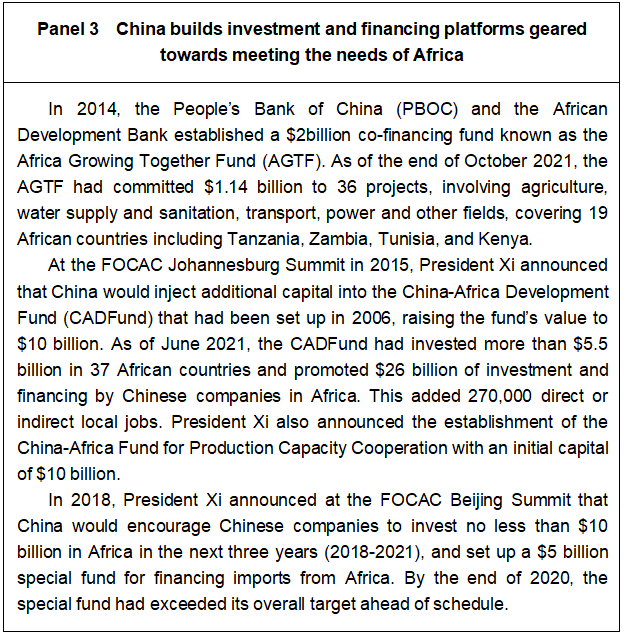
By the end of 2020, direct investment of Chinese companies in Africa had surpassed $43 billion. China has established over 3,500 companies of various types across the continent. Private companies have gradually become the main investment force in Africa; more than 80 percent of their employees are locals, and they have directly and indirectly created millions of jobs.
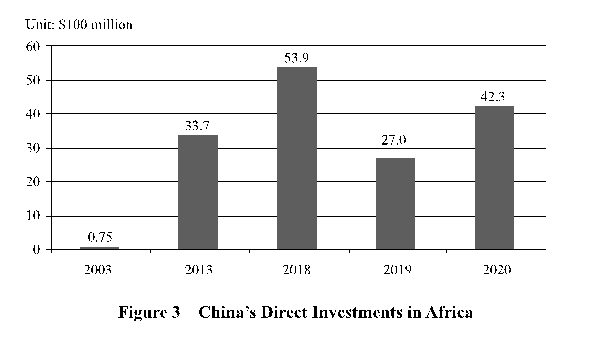
Industrializationis a prerequisite for the continent to achieve inclusive and sustainable development, and is also the key to creating jobs, eradicating poverty, and improving living standards. China supports African countries in improving their “soft” and “hard” environment for investment in accordance with their national conditions and development needs. Taking industrial alignment and capacity cooperation as the engine, China helps advance the process of Africa’s industrialization and economic diversification. To date, China has established industrial capacity cooperation mechanisms with 15 countries in Africa. China and African countries have worked together to build economic and trade cooperation zones, special economic zones, industrial parks and science parks, attracting enterprises from China and other countries to invest in Africa. They have built production and processing bases and localized their operations in Africa, contributing to an increase in local employment and tax revenues, and promoting industrial upgrading and technical cooperation. The China-Africa Fund for Production Capacity Cooperation has focused on the construction of highways, railways, and aviation networks, and industrialization in Africa. As of March 2021, investments had been made in 21 projects, covering energy, resources and manufacturing and boosting industrial development in recipient countries. Dozens of Chinese-funded enterprises have cooperated with African counterparts to build photovoltaic power stations, with a cumulative installed capacity exceeding 1.5 GW, which has helped create photovoltaic industry chains from scratch in Africa, while effectively alleviating power shortages and reducing carbon emissions.
China supports Africa in makinginfrastructure developmenta priority for economic revitalization. It encourages and supports Chinese enterprises to adopt various models to participate in the construction, investment, operation and management of infrastructure projects in Africa. From 2016 to 2020, total investment in infrastructure projects in Africa reached almost $200 billion. Projects implemented by Chinese companies accounted for 31.4 percent of all infrastructure projects on the African continent in 2020. Since the founding of FOCAC, Chinese companies have utilized various funds to help African countries build and upgrade more than 10,000 km of railways, nearly 100,000 km of highways, nearly 1,000 bridges and 100 ports, and 66,000 km of power transmission and distribution. They have also helped build an installed power-generating capacity of 120 million kW, a communications backbone network of 150,000 km and a network service covering nearly 700 million user terminals. Built and operated by Chinese companies, the Mombasa-Nairobi Railway was the first modern railway to be built in Kenya in 100 years. Applying Chinese standards, technologies and equipment, the project has won praise as a road of friendship and cooperation, and a path towards win-win development between China and Africa in the new era. The railway has carried 5.4 million passengers and 1.3 million standard containers. It has contributed 1.5 percent to Kenya’s economic growth, and created 46,000 direct and indirect jobs. China has guided its enterprises to explore multiple forms of cooperation, such as BOT (build-operate-transfer), BOO (build-own-operate) and PPP (public-private partnership). Such efforts aim to transform China-Africa infrastructure cooperation to a wholly integrated model covering investment, construction and operation, and push forward the sustainable development of infrastructure projects.

As part of the history ofthe Belt and Road, Africa is a natural partner of the initiative. In the past, the Maritime Silk Road brought Chinese tea, porcelain and development experience to Africa, promoting friendship and mutual learning, and it was thus recorded in history as a road of friendship. Since its inception, the new initiative has earned active support and participation from African countries. The cooperation between China and Africa under the initiative has a bright future.
The Belt and Road Initiativeis not a “solo”, but an “orchestra” in which the participation of both China and African countries is essential. In December 2015, South Africa became the first African country to sign an agreement on cooperation with China under the Belt and Road Initiative. Leaders of Kenya, Ethiopia, Egypt, Djibouti and Mozambique participated in the Belt and Road Forum for International Cooperation in 2017 and 2019, contributing to the initiative’s cooperative mechanism. At the 2018 FOCAC Beijing Summit, China and Africa agreed to strengthen China-Africa cooperation under the Belt and Road Initiative. To date, almost all African countries with diplomatic ties with China have already signed agreements on cooperation under the initiative. China and the AU Commission signed the Cooperation Plan on Jointly Promoting the Silk Road Economic Belt and the 21st Century Maritime Silk Road between the Government of the PRC and the African Union, the first agreement of its kind signed between China and a regional organization.
In recent years, connectivity between China and Africa under theBelt and Road Initiativehas also expanded at a faster pace. A number of transport infrastructure projects have been completed and opened to traffic, including the Addis Ababa-Djibouti Railway, the Mombasa-Nairobi Standard Gauge Railway in Kenya, No. 1 National Highway of the Republic of the Congo, the Thies-Touba highway in Senegal, the Port Gentil-Omboue coastal road and the Booué Bridge in Gabon, and the first and second phases of the Nigeria Railway Modernization Project. Projects such as the Doraleh Multi-Purpose Port in Djibouti and the Lome Container Terminal in Togo have been successful in increasing entrepot trade. These projects have played an important role in boosting regional connectivity and integration. To date China has signed civil aviation transport agreements with 21 African countries, bilateral airworthiness agreements with 12 African countries, and bilateral intergovernmental marine shipping agreements with eight African countries.
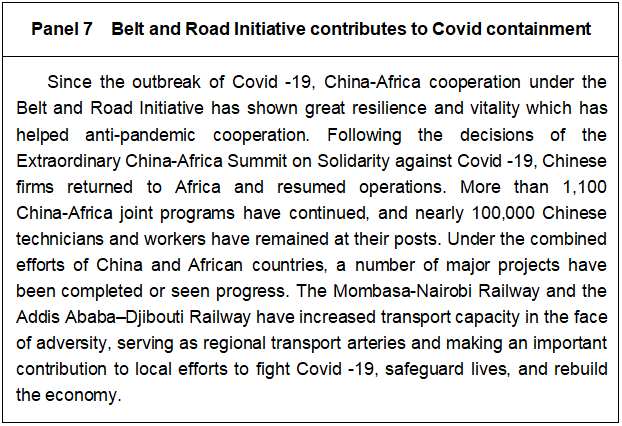
China will work together with African countries to promotethe Belt and Road Initiative, build an even stronger China-Africa community of shared future, and bring more gains to the Chinese and African peoples, thus making a greater contribution to lasting world peace and prosperity, and to a global community of shared future.
Editor's Choice
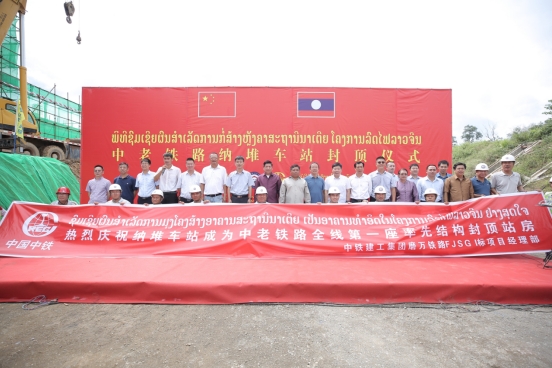
1st railway station built on China-Laos railway
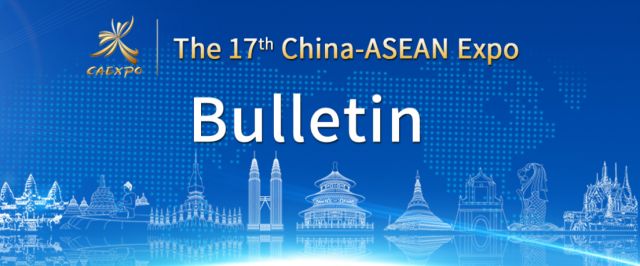
For common prosperity: an invitation from the 17th CAEXPO
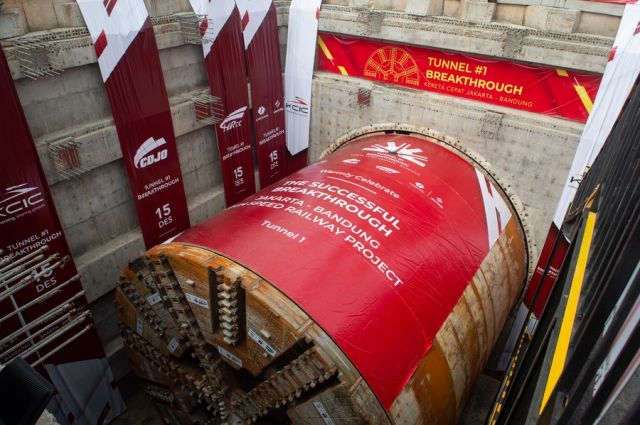
No. 1 Tunnel of Jakarta-Bandung high-speed railway successfully holed through
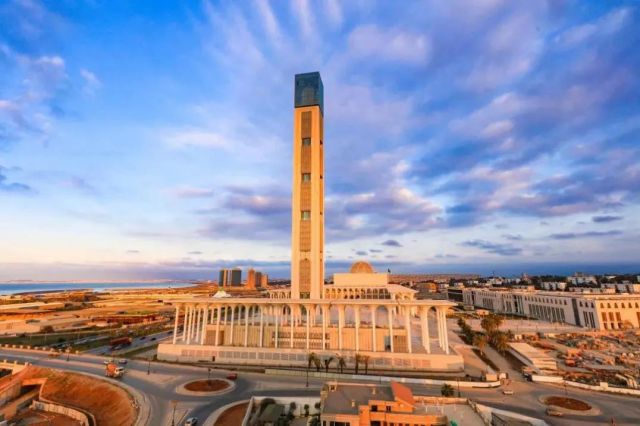
【The Belt and Road】 CWCG: The road of overseas development of intensive construction in Southeast Asia and breakthrough in the Middle East and North Africa
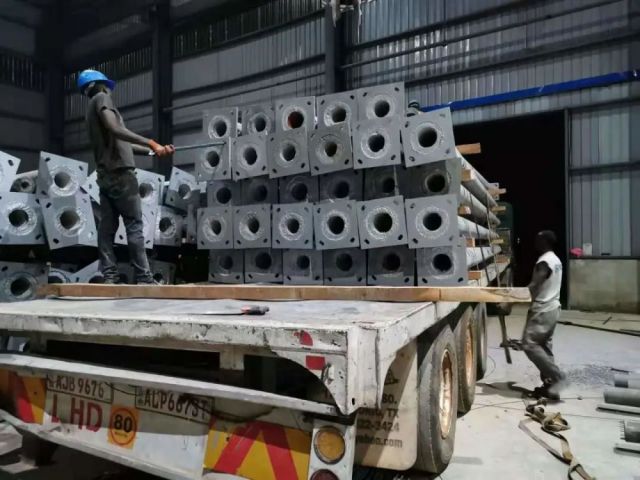
【The Belt and Road】BJHS: No retreat to expand the market;A great task to venture into Africa

【The Belt and Road】JUE1:Breaking through the routine of concrete to shape light luxury home products



 Printing
Printing
